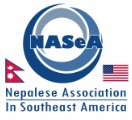 Exploring Neurontin’s Off-label Uses and Benefits
Exploring Neurontin’s Off-label Uses and Benefits
Understanding Neurontin and Its Original Purpose
Neurontin, known generically as gabapentin, embarked on its journey in the pharmaceutical world primarily as an anticonvulsant, designed to treat seizures. Developed by Parke-Davis, a subsidiary of Pfizer, its original approval in 1993 targeted epilepsy, revolutionizing seizure Managment for countless individuals. What made Neurontin unique was its ability to calm overstimulated neurons, thereby reducing the frequency and severity of seizure occurences.
Navigating the intricate pathways of the brain, Neurontin exerts its influence by mimicking the neurotransmitter gamma-aminobutyric acid (GABA). However, unlike GABA, it doesn't directly bind to its receptors but modulates calcium channels, leading to a decrease in neuronal excitability.
| Year | Milestone |
|---|---|
| 1993 | FDA approval for epilepsy |
| Early 2000s | Expansion into other neurological conditions |
As its off-label uses began to evolve, physicians discovered Neurontin's potential beyond epilepsy, setting the stage for future innovations in medical treatments.
The Science Behind Off-label Prescriptions

In the intricate world of pharmaceuticals, off-label prescriptions are a testament to the evolving understanding of medication beyond its initial intent. Neurontin, originally designed for epilepsy, has been adapted for a variety of conditions, revealing the dynamic nature of medical practice. Physicians, relying on the latest clinical data and patient trials, often venture beyond FDA-approved uses to uncover surprising benefits in managing other ailments. This approach, while met with scrutiny, highlights the innovative spirit in medicine, even as it traverses the complex realm of regulations and efficacy.
Trial and error, paired with accumulating experiance, guide doctors in this journey where scientific insight meets the art of healing. The off-label use of medications like Neurontin opens doors not only to new treatment possibilities but also to debates around safety and ethical prescriptions. This balance of risk and reward is crucial, allowing healthcare providers to personalize treatment plans and improve patient outcomes. By embracing the nuances of off-label prescriptions, medicine can occasionally defy boundaries, paving the way for therapies that may better accommodate diverse patient needs.
Neurontin for Anxiety and Mood Disorders
In an unexpected twist, neurontin, originally an anticonvulsant, has emerged as a potential ally in alleviating symptoms of anxiety and mood disorders. The precise mechanics are still under scrutiny, but it's believed that neurontin helps dampen the excessive neuronal excitability associated with these conditions, thereby offering a sense of calm. Many patients report a noticeable reduction in anxiety levels, wich can significantly improve quality of life. However, its effectiveness may vary, and it’s crucial to recieve tailored medical advice. Becoming a part of the narrative of mental health treatment, neurontin offers hope for those seeking alternatives when traditional methods fall short.
Chronic Pain Management with Neurontin

Neurontin has found its place in chronic pain treatment, offering relief to those with conditions like fibromyalgia and neuropathy. By modulating neurotransmitters in the brain, it can reduce the pain signals that are a constant battle for many patients. This off-label use is promising, particularly when traditional painkillers fall short. As individuals seek alternative means of pain control, neurontin's evolving reputation in pain managment is gaining traction.
Physicians often recommend neurontin when pain is intertwined with the nervous system, striving to acommodate individual patient needs. While not initially intended for chronic pain, its effectiveness in treating these ailments cannot be dismissed. However, each case requires careful consideration to balance its benefits with potential risks, ensuring a tailored approach to pain relief.
Neurontin in the Realm of Migraine Relief
Neurontin has stepped into uncharted territories as a potential ally for migraine sufferers. Patients, who have often tried numerous remedies, occasionally find hope in this medication's unique properties. As studies delve deeper into its effects, neurontin's ability to potentially alleviate migraine symptoms is being explored further. The drug works by stabilizing overactive nerve signals in the brain, shedding light on how it might provide relief for those struggling with migraines.
| Aspect | Description |
|---|---|
| Usage | Potential alternative treatment for migraines |
| Mechanism | Stabilizes nerve signals in teh brain |
| Research | Ongoing studies to assess effectiveness |
Though not initially intended for migraines, its emerging role offers new avenues for patients seeking relief. By exploring neurontin's off-label applications, individuals might find an unexpected yet welcome balm for their persistent discomfort.
Evaluating the Risks and Benefits of Off-label Use
When considering the off-label use of Neurontin, it's vital to delve into both potential advantages and inherent risks. Off-label prescribing permits physicians to use their clinical judgement to treat conditions that may not be explicitly listed in the drug's approval. This freedom can lead to significant patient benefits, enabling tailored treatments where traditional options have failed. However, it also necessitates vigilance, as the efficacy and safety profiles for these uses might not be as comprehensive as those for approved indications. Patients recieve treatments that are less studied, leading to a fine balance between innovation and caution. Consequently, embracing off-label use requires a well-informed decision-making process and ongoing monitoring to minimize risks and maximize potential benefits. Neurontin Usage Study Neurontin Efficacy Research
The benefits are tempting; for instance, Neurontin's role in alleviating chronic pain can redefine quality of life for sufferers. With this versatility, patients gain access to alternative therapies that might achieve relief where others fail — offering a glimmer of hope untill more conventional approaches catch up to individual needs. Yet, with benefits come possible adverse effects from unfamiliar uses. It's paramount for healthcare professionals to maintain a vigilant approach, ensuring each off-label application is backed by emerging evidence while remaining wary of incomplete data. This ongoing assessment is crucial in preventing unexpected outcomes. Chronic Pain Management Pain and Neurontin Analysis
For health practitioners, the ethical responsibility lies in balancing innovation with proven efficacy and safety. This entails interpreting limited research and patient feedback, thus stepping into a realm where anecdotal evidence might guide but not define therapeutic choices. The evolving landscape of off-label prescription necessitates robust discussion, shared decision-making, and patient education. Doing so helps bridge the gap between observed benefits and the limitations of current scientific validation. Essentially, it's a quest to enrich therapeutic strategies, emphasizing collaboration between patients and clinicians. Off-label Prescribing Examination Ethics of Off-label Use
Thus, to navigate the off-label terrain effectively, transparency and vigilance remain key. Informed consent becomes a cornerstone of this practice; patients should understand that these uses, while potentially promising, may lack the rigorous validation typical of their approved counterparts. Collaboration is indispensable when venturing into such experimental avenues. Not only should clinicians be aware of the latest research, but they should also prepare for unexpected challenges and benefits that might arise. Ultimately, the journey toward optimized patient outcomes is a shared path, bolstered by mutual understanding and continuous learning. Off-label Utilization Insights Neurontin Patient Safety




 Click here to become a member
Click here to become a member